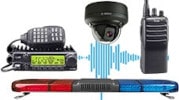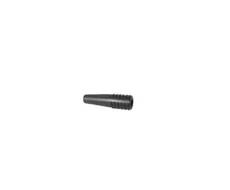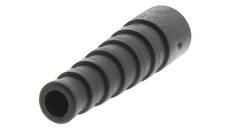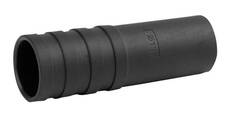- Special Offers
- Transceiver Radio
- Transceiver Accessory
- Antennas
- Antenna Accessory
- Cable
- Connector
- Antenna Coax Connector
- RF Antenna Connector Assembly
- Cigarette Lighter Connector
- AC Cable
- DC Connector
- Jack Connector
- Microphone Connector
- RCA Connector
- RJ Connector
- Cable Strain Relief
- TV Wall Socket
- Installation Material
- Installation Tools
- Measuring Equipement
- Body Worn Camera
- Electrosmog
- Telephone
- Baby Monitor
- Fever Thermometer
- Radio Device
- Set-top Boxes
- Personal Protective Equipment
- Motorcycle Helmet Speaker
- Car Equipment
- Voltage Converter
- Dry Cell
- Battery
- Battery Charger
- Emergency Signal
- Amber Signal
- Sound Signal
- Light and Sound Signal Accessory
- Traffic Engineering
- LED Lamp
- Smart Home
- Mosquito Repellent Device
- Market - Other Products
- Discontinued Products
Pre-order (2)
Telegartner (2)
Cable Strain Relief
I'm sure we've all experienced a broken cable on one of our favourite entertainment electronics, our home appliance. How annoying! Cable breakage is usually caused by winding up and storing the wires. Therefore, we should avoid winding up cables frequently and tightly. In addition, HDMI cables are particularly sensitive. Under no circumstances should this type of cable be wound up tightly. But there is a small plastic device to avoid this. The anti-breakage device. Read more...
Pre-order (2)
Telegartner (2)
• Strain relief for RG-58/H-155 cable
• Strain Relief for RG-58 coax cable, BNC and TNC connectors
• Manufacturer number: B00081A0062
• Color: black
• Diameter: 10.8 mm
• Weight: 2.1 g
But why is it so important to use a cable breakage protector? Because a cable break can be life-threatening! Damaged insulation and exposed wires can cause burns or other serious injuries or even death if touched while using the device. Especially for children or pets who are unaware of the danger. In addition, cable breaks can cause house fires. Damaged wiring can cause sparks, one of the most common causes of house fires.
How to use an Cable Strain Relief
Using an anti-breakage device not only saves you from a broken cable, but also from buying a new appliance, phone charger, headphones. Simply pull the breakage protector onto the end of the cable where it connects to the device. But with UTP and FTP cables, for example, you don't have to pull it on, but snap the two parts onto the cable from the bottom and top. The simple design makes securing the cable protection almost child's play. Make sure that the anti-breakage device fully protects the critical area. Otherwise, the cable will break above or below the breakstop.
What is the breaking strength of the antifuse?
The role of an anti-breakage device is to protect the wires from cable breakage. Since they are all made of hard plastic materials that are not flexible, the breakage inhibitor effectively protects the cable. It simply protects the wires from being broken. As a result, we don't have to buy a new appliance and we don't stand a chance of having a fire in our home due to a cable break.
Which types of appliances should be fitted with a breakage prevention device?
We can apply cable breakage protection to almost any appliance we have. Since HDMI cables, which stands for High Definition Multimedia Interface and are mainly used to transmit audio-video signals, are the most susceptible to cable breakage, the devices that receive data via such cables are the ones that need to be protected the most. But, of course, the use of antifragmentation is recommended for coaxial cables or other cables, especially the thinner types.
Is there a difference between the various Cable Strain Relief?
In general there is no difference between the different cable breakage protection products, but there are, for example, some that are built in one piece with the gland and some that are cylindrical and some that are rectangular. In each case, it depends on the type of wire you want to use the break protection for.
What types of Cable Strain Relief are there?
Antifragmenters can be used for example for RG-58 coax cable, BNC and TNC connectors, but as already mentioned they can also be used for UTP and FTP cable and 8P8C modular plugs are also perfectly suitable.
How effective are its Cable Strain Relief features in everyday use?
The anti-breakage is perfectly suited for office and household devices, be it a smartphone, tablet or any other device. It is also safe, durable, small, lightweight and portable. And it's easy to use - you don't even need any manual dexterity. There are also versions that have eye-catching decorations to brighten up the interior of your home.
How does the Cable Strain Relief device affect the use of appliances?
The tiny anti-breakage device does not affect the use of the device in any way, as the only thing you will notice is that there is a thicker plastic part where the cable meets the device. Some devices are already equipped with an anti-break device by the manufacturer.
What should you do if the Cable Strain Relief layer is damaged?
If the anti-fracture coating is damaged, it should be replaced immediately. This will take about the same time as it takes to replace the cable protection layer. So take this short time and replace it, because if it is damaged, it will no longer perform its function perfectly and the cable underneath may also be damaged, which could cause a fire or even endanger the health of your children.
When installing cables in an area with outdoor space, it is important that the cables are properly protected against cable breakage. The wide range of anti-breakage products available in DND's webshop can help you do this.




